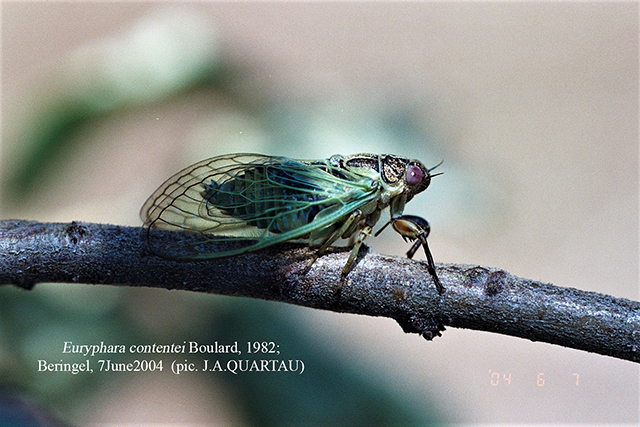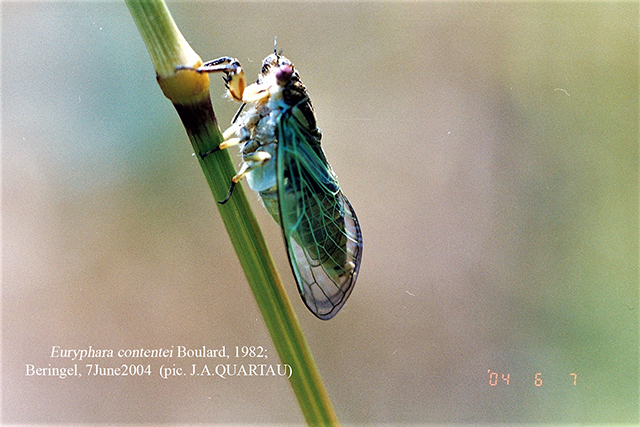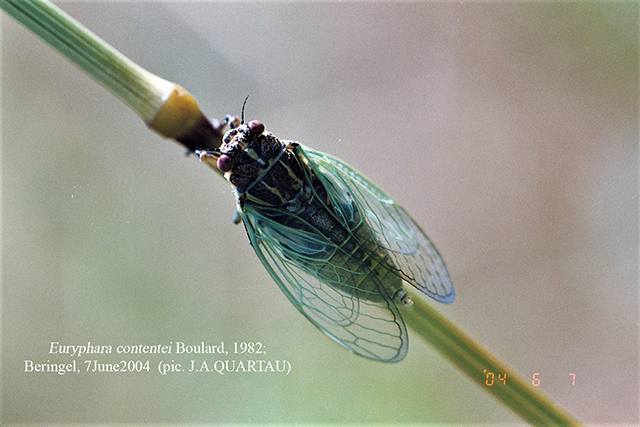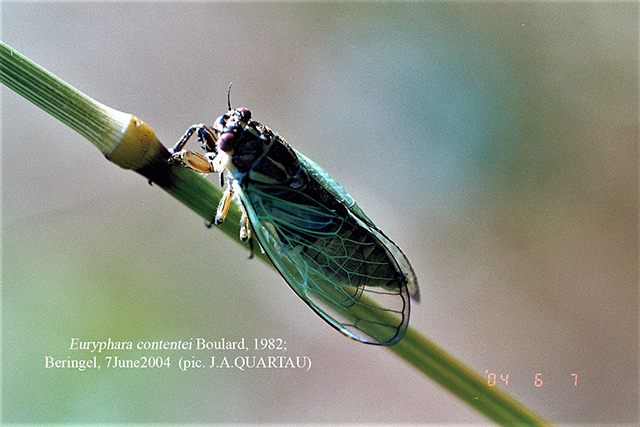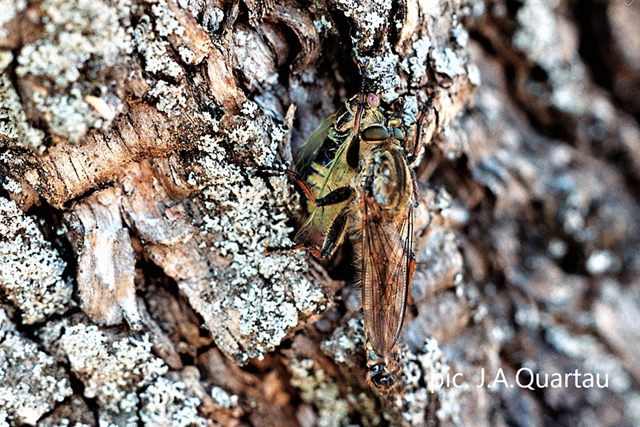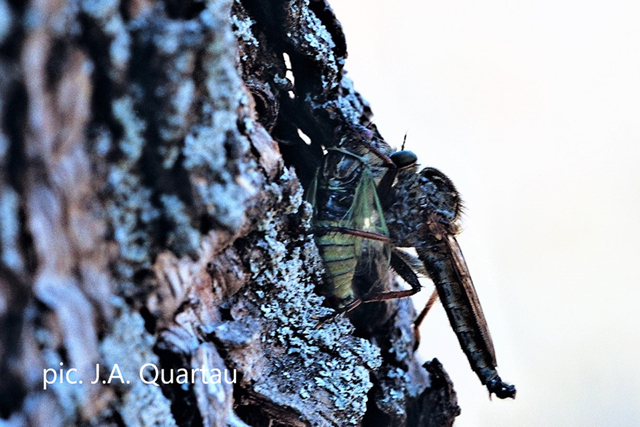Small and fragile greenish cicada that I have been monitoring for years. It is one of the most endangered species in Portugal, with extremely reduced and localized small populations.
Distribution- In very localized biotopes of Baixo Alentejo and Alto Alentejo. Originally described from a small spot, which has now disappeared due to a fire in the Ferreira do Alentejo area. It was later found in the Beringel area, as well as in a few spots very close to Sousel.
Ecology-
In herbaceous vegetation of very restricted biotopes of the Alentejo, being in fact very rare and with current distribution very localized.
Notes - Males sing from June to early July, perched on grasses. The calling sound of specimens of the type locality (Ferreira do Alentejo) that I recorded were described in Quartau&Simões (2003). The main reason for their disappearance of this species is, no doubt, the loss of habitat. Today the whole area has been practically used for intensive olive cultivation, among others such as sunflower, which involved the destruction of the herbaceous layer where this cicada lives. As this is one of the rarest and most threatened cicadas in Portugal, a detailed analysis of its ecology was recently made and its conservation proposed through the creation of micro-reserves (Quartau & Simões, 2014).
A circumstance of ecological and conservation interest is the fact that this small and fragile cicada was found predated by asilids during my field-work in the small areas where it survives (Diptera) (Cf. photos 5 and 6).
QUARTAU, J.A. & P.C. SIMÕES. First description of the calling song produced by Euryphara contentei Boulard, 1982 (Insecta: Hemiptera, Cicadoidea) in Portugal. Arquivos do Museu Bocage, III (22): 563-572.
QUARTAU, J.A. & P.C. SIMÕES. 2014. Microrreservas em entomologia: uma abordagem à conservação de Euryphara contentei (Insecta, Hemiptera, Cicadoidea) em Portugal. In: Professor Carlos Almaça (1934-2010) - Estado da Arte em Áreas Científicas do Seu Interesse. MJ Alves, A Cartaxana, AM Correia, LF Lopes (eds), Museu Nacional de História Natural e da Ciência, Lisboa, pp. 99-119.







